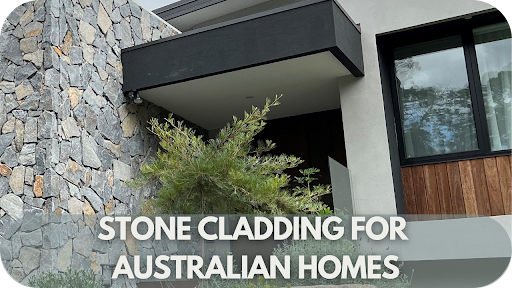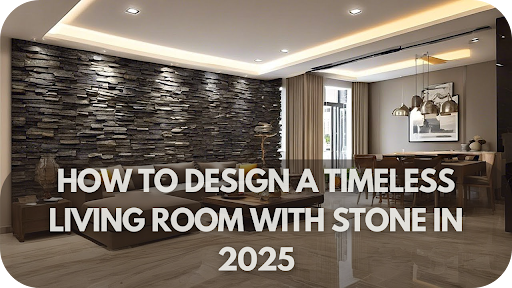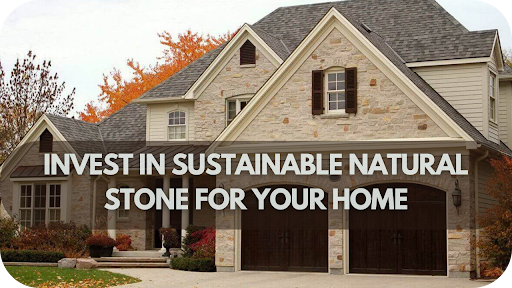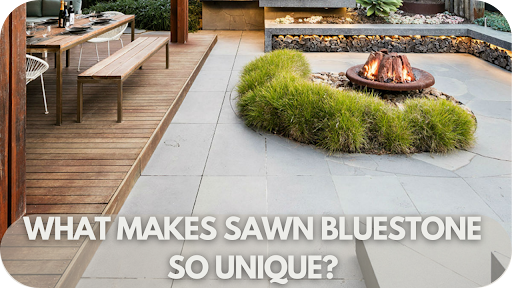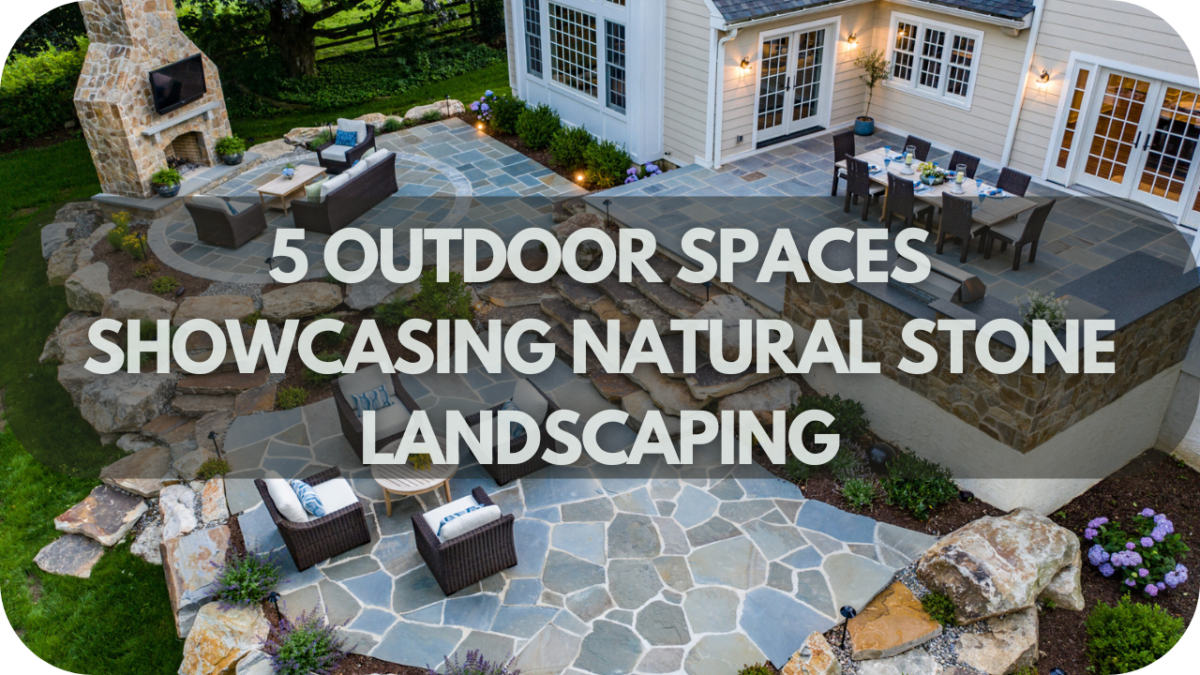Stone Cladding for Australian Homes: A Style Guide for Every Aesthetic
Imagine walking into a home where the exterior exudes elegance and durability, effortlessly blending with the environment.
Stone cladding makes that vision a reality, offering unmatched versatility for Australian homes. Whether you’re drawn to sleek modern designs or rustic country charm, stone cladding can transform your space.
But how do you choose the right style for your aesthetic? Let’s dive into how this timeless material can elevate your home’s design, no matter your style preferences.
Why Choose Stone Cladding for Your Australian Home?
Stone cladding effortlessly combines timeless elegance, unmatched durability, and practical functionality. Whether you want to enhance your home’s aesthetic or improve its resilience against Australia’s challenging climate, stone cladding is a versatile and valuable choice.
Let’s explore why this sophisticated option perfectly fits your Australian home.
1. Aesthetic Appeal
Stone cladding enhances a property’s visual charm, providing a timeless elegance that complements various architectural styles. Its natural beauty adds depth and character to both modern and traditional homes.
2. Durability
Renowned for its durability, stone cladding withstands Australia’s diverse climate, resisting weathering and maintaining its integrity over time. This resilience translates to lower maintenance costs and a longer lifespan for your home’s exterior.
3. Energy Efficiency
The thermal mass of stone helps regulate indoor temperatures, keeping homes cooler in summer and warmer in winter. This natural insulation can reduce energy bills, enhancing the home’s overall energy efficiency.
4. Fire Resistance
Stone cladding offers a crucial advantage in bushfire-prone areas due to its fire-resistant properties, providing homeowners with added peace of mind.
5. Versatility
With various colours, textures, and patterns, stone cladding can be tailored to achieve the desired modern or traditional aesthetic. This versatility allows for customisation to suit personal tastes and architectural designs.
6. Increased Property Value
By enhancing curb appeal and providing a premium finish, stone cladding can increase property value, making it an attractive feature for potential buyers.
Incorporating stone cladding into your Australian home is a strategic choice that combines beauty, durability, energy efficiency, and safety, making it a worthwhile investment for any homeowner.
Stone Cladding for Different Home Styles
No matter your home’s style, stone cladding offers a perfect way to enhance its character and appeal. From modern minimalist designs to rustic country charm, here’s how different stone options can complement every aesthetic, adding texture, warmth, and timeless elegance to any space.
1. Modern Aesthetic
For a modern aesthetic, smooth and sleek options like limestone or honed granite are perfect. These stones’ clean lines and subtle texture complement minimalist design, while their neutral colours—such as greys and whites—create a contemporary, refined look.
Uniform textures enhance modern architecture’s overall simplicity and elegance, making these stones ideal for urban homes and sleek, open-plan spaces.
2. Rustic and Country Styles
Rough-cut stones like slate or sandstone bring a rugged, natural charm to rustic and country-style homes.
Their irregular shapes and earthy tones, such as warm browns and reds, create a sense of authenticity and timelessness. The rough texture of these stones adds character to exteriors and interiors alike, enhancing the earthy, organic feel of country settings.
3. Mediterranean and Coastal Vibes
Opt for soft, sandy-hued stones like travertine or limestone for Mediterranean or coastal vibes. These stones evoke a sun-soaked, coastal atmosphere and blend beautifully with the natural surroundings.
Lighter tones help create airy, relaxed spaces, making them perfect for beachside homes or patios. Their subtle colour palette complements lush greenery and the soft hues of the ocean.
3. Contemporary and Industrial
Polished granite is ideal for a bold, edgy look for contemporary and industrial settings. These stones bring a striking contrast to modern designs, especially when mixed with other materials like metal or concrete.
The deeper shades of grey and black and varying textures enhance the industrial aesthetic, adding character and visual intrigue to urban spaces.
4. Classic and Traditional Homes
Classic and traditional homes benefit from elegant stones like sandstone or natural granite. These stones provide a timeless appeal, with their light colours and refined finishes bringing a sense of sophistication.
Sandstone’s warm tones and granite’s durability make them ideal for maintaining a classic, welcoming look that never goes out of style.
Interior Applications of Stone Cladding
Stone cladding isn’t just for exteriors; it can transform your interior spaces too. From stunning feature walls to elegant kitchen splashbacks, here’s how stone can bring texture, warmth, and sophistication to your home’s interior design.
1. Feature Walls
A stone feature wall with expertly installed wall cladding creates a stunning focal point in any room. It adds texture and elegance to the living room, kitchen, or bathroom.
Limestone or granite wall cladding is an excellent choice for a sleek, modern feel, while sandstone wall cladding works well for a more rustic look. These beautifully clad walls bring warmth, character, and a natural aesthetic to interiors, making them a timeless addition to any space.
2. Fireplace Surrounds
Stone cladding around fireplaces adds both warmth and texture, making it the perfect material for this central feature in your home.
Stones like granite or slate are ideal because they withstand heat well while providing a sophisticated, rugged appearance. A stone-clad fireplace can become a stunning focal point that enhances the room’s overall design.
3. Kitchen Splashbacks
Stone splashbacks add both elegance and practicality to kitchens. With their sleek surfaces, polished limestone or granite are easy to clean and maintain while adding a touch of luxury.
Stone splashbacks are also highly durable, providing long-lasting protection against cooking splashes and stains, all while complementing modern or traditional kitchen designs.
4. Bathroom Walls
Stone cladding in bathrooms elevates the space with its luxurious and spa-like appeal. Natural stones like travertine or marble offer durability and a refined aesthetic.
These materials resist moisture and wear, making them perfect for wet areas. A stone-clad bathroom wall can transform a simple space into a serene retreat, blending timeless beauty with modern functionality.
Outdoor Applications of Stone Cladding
Stone cladding isn’t just for interiors—it can elevate your outdoor spaces too. From enhancing your home’s façade to creating safe, stylish pool surrounds, stone cladding can bring beauty and function to your garden and exterior areas.
1. Exterior Walls and Facades
Stone cladding boosts your home’s curb appeal while offering excellent protection to exterior walls.
Weather-resistant stones like granite or sandstone are perfect for enhancing the façade, providing an elegant look that lasts. They not only make the home stand out but also act as a robust barrier against the elements.
2. Garden Walls and Outdoor Features
Stone cladding is ideal for enhancing garden walls, retaining walls, and other outdoor features like planters. It provides a natural, harmonious look that blends well with the outdoors.
Stones like sandstone, with their texture and colour variations, add depth and elegance to garden spaces, creating a cohesive and attractive landscape.
3. Pool Surrounds
For pool surrounds, slip-resistant stones like travertine or sandstone are ideal. These stones provide a safe surface around pools while adding to the aesthetic appeal with their natural colours and textures.
Lighter tones, such as those found in travertine, help create a bright and inviting poolside environment that reflects the natural surroundings.
Tips for Selecting the Right Stone Cladding
Choosing suitable stone cladding involves more than just style—it’s about functionality, budget, and environmental compatibility. Here are some expert tips to help you select the perfect stone for your home, ensuring aesthetic appeal and long-lasting durability.
- Consider the Local Climate and Environment: Choose stones suited to local weather; granite for heat resistance, sandstone or limestone for moisture and salt tolerance.
- Match Stone Cladding with Existing Colours and Materials: Select stones that harmonise with your home’s design; travertine or sandstone create appealing contrasts with wooden elements.
- Consider Your Budget: Natural stone is durable but costly; manufactured stone offers similar aesthetics and durability at a more affordable price.
- Assess Maintenance Needs: Natural stone may require regular sealing and cleaning, while faux stone typically demands less upkeep, making it ideal for low-maintenance preferences.
- Evaluate Installation Complexity: Intricate designs or uneven surfaces might require professional expertise, whereas simple layouts may be suitable for DIY installation.
- Prioritise Durability: Select strong, wear-resistant stones like granite or basalt for high-traffic areas to ensure long-lasting performance.
- Think About Sustainability: Choose eco-friendly options, such as reclaimed stone or responsibly sourced materials, to reduce your environmental impact without compromising style
Installation and Maintenance Tips
Proper installation and maintenance ensures your stone cladding looks stunning and lasts for years. Here are essential tips to help you get the most out of your investment.
- Professional vs. DIY Installation: Professional installation ensures a precise finish for complex projects, while DIY suits simpler tasks but requires experience to achieve the best results.
- Sealing and Protecting Stone Cladding: Seal stone cladding to guard against moisture and stains. For high-exposure areas, reapply every 2-3 years or more frequently to maintain its appearance.
- Routine Maintenance and Cleaning: To preserve the beauty and prevent weathering, periodically clean outdoor cladding with a soft brush or pH-neutral cleaner. Avoid harsh chemicals.
- Avoid High-Pressure Cleaning: High-pressure washers can damage stone surfaces. To maintain the integrity of the stone, use a gentle spray and avoid abrasive tools.
- Check for Cracks or Damage Regularly: Periodically inspect stone cladding for cracks or damage. Early detection helps prevent more significant issues and costly repairs in the future.
- Use Protective Pads for Furniture: When placing furniture on stone surfaces, use protective pads to prevent scratches and scuff marks that can damage the cladding’s finish.
- Avoid Sharp Edges: When handling or installing stone cladding, avoid dropping or dragging sharp objects over it. This can scratch or chip the stone, affecting its appearance.
Conclusion
Stone cladding is an ideal way to enhance the beauty, durability, and value of your Australian home, regardless of your preferred style.
This versatile material suits every aesthetic, from sleek modern designs to rustic charm. Ready to transform your home with the timeless appeal of stone cladding? Contact Splendour in Stone today to browse our range of stone options and find the perfect solution for your next project. Let’s bring your vision to life!

